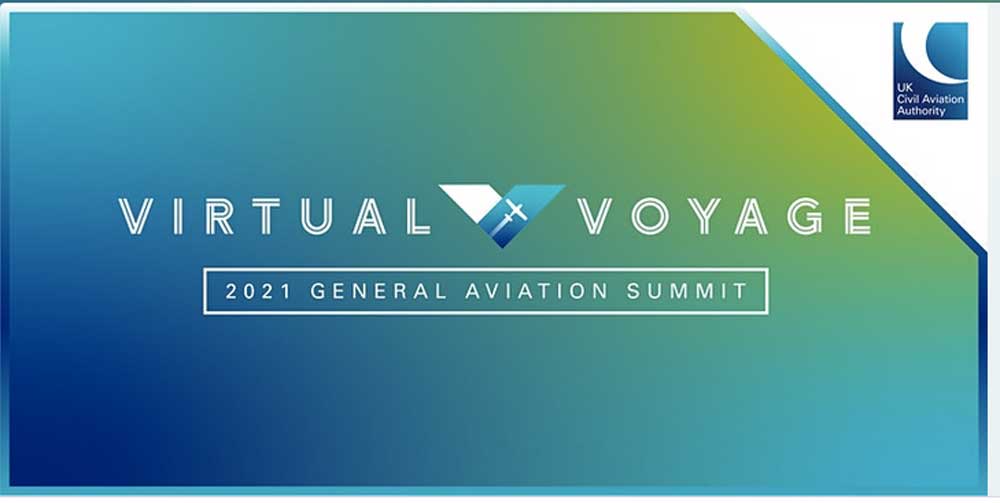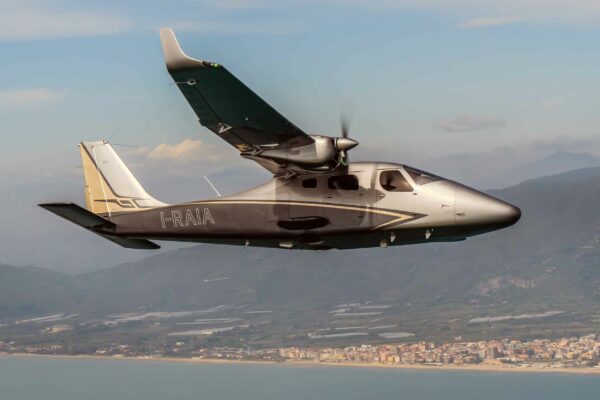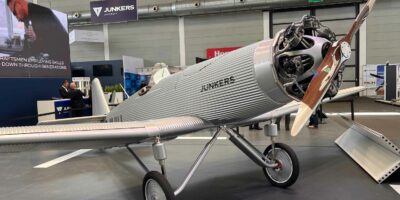The CAA held its Virtual Voyage seminars in early October and FLYER’s Ian Seager was invited along to ask questions. The seminar was not recorded by the CAA but the authority has supplied this transcript of the Q&A:
FLYER Just what is going on with licensing at the CAA? Your own figures tell us that licences are being turned around in an average of 11 (working) days and that no application is older than 14 working days. These are numbers that many people, including myself, do not recognise.
Plus, the CAA told me that 50% of applications are rejected (pended). The system is clearly broken with serious work and financial consequences for some. What is the plan to fix this, what are the internal performance targets and when can we expect to see significant progress?
CAA From our presentation on licencing, we know that more is needed to be done to simplify the actual licencing processing – more is being done – bringing in more people and training.
From our presentation on the future of licencing, you can see there are a number of projects from the GA Consultation looking specifically at the future of licencing and how we can improve this service.
We have seen that approx. 50% of applications are put on hold. We would also ask that those GA pilots submitting applications can make sure they are submitting complete applications this will help us ensure we can keep the process going.
We recognise more need to be done. It’s a topic that touches all in the GA community and it’s an area we want to improve on.
FLYER Can you describe The Big Picture for GA in this country going forward (given the variety and diversity of work going on, including all of the drone/eVTOL projects etc.), and what is the CAA’s remit when it comes to aviation? Is it to regulate and promote?
CAA Supporting the potential growth of both sectors and integration. PwC said the sector has the potential to be worth £3 billion by 2030 and RPAS operations accounting for a further £42 billion. There are enormous potential benefits for UK PLC, and this is why I feel we can no longer continue to segregate the two GA and RPAS communities. There is a finite amount of airspace and it’s a national resource that is supposed to be subject to fair access. Both the GA and RPAS communities are growing and we need to integrate them to make best use of our resources.
[Other points]
- Simplify. GA is vastly complex. This is why a lot of our short-term work and longer term is on simplification and rationalisation, whether new Skyway Code or simplifying our approach to licencing. In terms of pilot licencing, we have brought the EASA licencing regulations and guidance material over into UK law and guidance. In addition, we still have licences issued under pre-existing UK legislation. We appreciate that this can make navigating the licencing requirements complex and time consuming.
- Improving our communication.
- Modernise. The GA & RPAS Unit is keen to embrace some of the innovation opportunities available to operators and aerodromes. These include biofuels, electrification and how technology can be used to improve things like MOR reporting.
FLYER Will the CAA be implementing a Basic Instrument Rating (as per EASA) and if not, will the IR(R) be extended to allow access to Class A airspace?
CAA This is part of the review whether or not to implement the BIR. There are no plans to extend the IMC/IR(R) Rating to include flight in Class A Airspace.
FLYER Has the CAA started on making bilateral agreements with all EASA states to allow mutual operation of microlights and other “non-EASA types”?
CAA Bilateral agreements are made by HM Government, not the CAA. The CAA would be asked to provide technical support in such negotiations.
The relationship between the UK and the EU is very formal at this time. There are discussions starting shortly at Government level and we hope that once this has been completed, EASA and the CAA can have more open discourse.
FLYER What progress has the CAA made in its negotiations with EASA to restore privileges to UK LAPL holders to fly G-registered aircraft abroad? If EASA is not willing to allow it, what steps will the CAA take to restore the privileges (for example converting UK LAPL to a UK PPL with limited privileges)?
CAA Bilateral agreements are made by HM Government, not the CAA. The CAA would be asked to provide technical support in such negotiations.
FLYER Will they [the CAA] change their position regarding FAA licences and transfer of FAA Instrument Rating without having to take Skills Test etc? I understand this is a DfT decision, something I am more than happy to point out if the CAA would prefer not to.
CAA The CAA acts within the legislation set by HM Government.
FLYER What about an agreement to reinstate operation of formerly EASA PtF (now CAA PtF) aircraft in EASA-land? They seem to have slipped down the gap between CofA and LAA PtF types. Is the CAA doing anything about this, or does it have plans to?
CAA Bilateral agreements are made by HM Government, not the CAA, the CAA would be asked to provide technical support in such negotiations.
FLYER What are the CAA’s long-term plans for GA conspicuity? I have Freedom of Information info relating to board being advised to adopt ADSB.
CAA The CAA and the DfT have reached an agreement on the next steps for Electronic Conspicuity. We are busy putting in place the building blocks to deliver against those steps and anticipate a statement from the two organisations shortly.
The headlines of our approach will be the development of a ‘single technical standard’ that allows for the delivery of key benefits – Airspace Modernisation, integration of new users, development of the provision of Air Traffic Services and reduction in the risk of Mid-Air Collision.
There are currently no plans for a general mandate for EC. We will continue to encourage its use and work with the DfT on options to facilitate the full benefits of EC carriage.
We anticipate a mature draft by end Q1/22. We will of course continue to engage with the user community as we move forward.
FLYER Why do the RNP approaches to airfields without full air traffic have restrictions that effectively make them unavailable to GA pilots, and will anything be done to speed up the roll out of RNP approaches in the UK
CAA The GNSS programme is a DfT sponsored CAA delivered programme. It aims to introduce GNSS approaches to airfields outside of controlled airspace with no approach control which will directly benefit the GA community.
The programme will deliver significant safety improvements enabling pilots to recover to airfields and land safely in poor weather. It will also encourage commercial development activity across the smaller airfields enabling them to operate in poor weather conditions, where previously their operations have been limited to fair weather days. The rollout of GNSS approaches is widely supported by the aviation sector, including by the International Civil Aviation Organisation.
As the Programme transitions between phases, the CAA has revised and refined the ACP reducing the overall procedure by 40 – 50 %. This will streamline the process for future ACP sponsors.
FLYER What is the likelihood of the UK re-subscribing to EGNOS. If not, what are the UK’s plans to provide LPV approaches now EGNOS is not available.
CAA UK Government has determined that we will not re-subscribe to EGNOS but is rather looking at other nationally driven options.
FLYER There’s no legal prohibition from flying in most Danger Areas, why then did CAA policy change to deem them as worthy of an infringement (they appear in the infringement stats)?
CAA The CAA has not changed its policy. Under Section 3 of the Civil Aviation Act 1982 the safety of air navigation and aircraft are statutory functions of the CAA which are intended to keep pilots and the general public safe.
The CAA has an obligation to minimise the risk of a serious safety event occurring (in this case caused by the unintended or incorrect presence of an aircraft in a Danger Area, or Temporary Danger area), and for all parties to learn from previous events.
Accepting that there is no legal prohibition or restriction from flying within many danger areas, in order to meet its obligations regarding safety, the CAA reviews Occurrence Reports relating to flights within DA/TDA under the Just Culture principles set out in CAP1404.
FLYER Why doesn’t the CAA require all potential drone operators carry out their technology demonstrations at a single remote location where it will be safe for the public and not require a vast array of TDAs popping up and restricting Class G for all other users.
CAA The UK states that airspace is a national asset. We aim to provide fair and equitable access to airspace. If we asked all drone operators to be in one location only, we would not be following principles of fairness and equitable access.
The need to test in different locations is also essential for innovation. An operation over a remote part of the North Sea compared to an urban location has a completely different risk profile – both need to be tested if different and credible use cases for drones are to be realised on a larger scale.
This isn’t to say that set location doesn’t have its place, the use of TMZ is one the CAA is considering for trials and technology and we know that TDA have a limit and cannot be used forever. It is worth stating their use is also quite stable and has been around 20 for the last few years.
FLYER Will the CAA admit that CELLMA is a complete mess? When will it be fixed?
CAA Dr Mike Trudgill, Chief Medical Officer addresses issues surrounding CELLMA within his presentation. [See here}
FLYER Why can the self-declaration process not be more simple and straight forward where an A5 Medical Form can be printed off to keep with our licence?
CAA From our presentation on the future of licencing, you can see there are a number of projects from the GA Consultation looking specifically at the future of licencing and how we can improve this
We currently have NPPL-M to NPPL-SSEA skill improvement transition path which has served well for nearly 20 years. We have 9 years of experience of a LAPL(A) to ICAO PPL(A) skill improvement path.
FLYER When will we have the equivalent skill based improvement path for NPPL-SSEA holders to ICAO PPL(A), giving a joined-up skill improvement and qualification progression route for all along the hobby GA licence ladder?
CAA The review of licencing for GA pilots will consider this in all probability.
FLYER The old paperwork exercise from NPPL SSEA to LAPL then onwards to PPL was acceptable to all including the CAA. EASA decided to change the rules and the eventual implementation happened in Apr 18. Now that we have left EASA, and the LAPL is now a U.K. Part FCL licence, why can’t the old route be reinstated via a pronouncement from CAA.
CAA The review of licencing for GA pilots will consider this in all probability.
FLYER Will the CAA automatically and immediately incorporate the latest additions to CS-STAN for G registered aircraft? If not, why not?
CAA The UK is no longer an EU Member State. There is a responsibility on the CAA to decide what is appropriate for the UK industry and follow a process prior to publishing Acceptable Means of Compliance Material, which the Certification Standard is.
FLYER The threats and closure of many UK light GA airfields is a great concern to most of us. Without somewhere nearby to have a base or somewhere you want to fly to means a decline for UK GA. Are there any plans to reverse this?
CAA The CAA has a limited role in planning matters. However as recently seen the CAA Airfield Advisory Team has responded to a planning application that did not support the aims and objectives of the National Planning Policy Framework in recognising the importance of the network of GA aerodromes.
The overarching purpose of the CAA’s AAT is to provide advice to Government and to licenced and unlicenced airfields on matters that relate to the Government’s objective of sustaining the UK network of airfields and that are relevant to CAA’s functions.
The AAT can provide non-regulatory advice and support on a wide range of matters including but not limited to the following:
* Operations
* Airspace
* Impact on aviation due to planning and development
* Air traffic Services
* Stakeholder Engagement
An example of an AAT success is when we were asked to provide commentary on the proposed redevelopment of Chalgrove Airfield which was to include several thousand new homes and other local amenities whilst preserving aviation operations on site.
We demonstrated that the proposed redevelopment scheme and aerodrome operations were not compatible. This led to the outline planning application being withdrawn.
FLYER What is the reasoning for changing the well-known and easily remembered phrase ‘squawk 7000’ which has two syllables, for the awkward, cumbersome and difficult to say ‘conspicuity’ with five syllables.
CAA The need to introduce the RT phraseology ‘squawk conspicuity’ was identified during the project (and associated consultation) to amend the ATS procedures for Class E airspace.
Prior to the introduction of ‘squawk conspicuity’, the Mode A transponder code 7000 meant ‘conspicuity’ which could be selected for VFR or IFR flights in Class G airspace whether they were operating autonomously or receiving an ATS.
However, this is not helpful for controllers tasked with providing an ATS within Class E airspace because they cannot detect an IFR infringement of Class E airspace.
This was resolved by introducing an ‘IFR conspicuity code’, which was achieved through additionally defining the Mode A transponder code 2000 for this purpose and amending the definition of the Mode A transponder code 7000 to ‘VFR conspicuity’.
These changes enable pilots to display the conspicuity code according to the flight rules they have decided to use. Consequently, once the A2000 and A7000 codes were redefined, it was no longer appropriate for a controller to instruct a pilot to ‘squawk 7000’ in Class G airspace, because the pilot (subject to meeting pilot licencing conditions) may not be operating in accordance with VFR.
Incidentally, the UK practice of using 7000 for ‘VFR conspicuity’ and 2000 for ‘IFR conspicuity’ is consistent with practices of many other States. However, most prohibit autonomous IFR flight in Class G airspace. For further details please review www.caa.co.uk/cap1800
FLYER I am now 63 days into waiting for an email answer from the CAA on this! Can a FIA) SEP instructor with FCL945 signing rights on their licence sign off a three-axis microlight rating revalidation provided they are entitled to instruct on three-axis microlights?
CAA It would be inappropriate to provide comment on individual cases in this forum. Please can you contact [email protected] sharing your concerns and we can ensure the correct department responds on this.
FLYER Why can’t Part ML be more flexible? We are currently faced with most of an annual every 100 hours.
CAA From our presentation on the future of licencing, you can see there are a number of projects from the GA consultation looking specifically at the future of licencing and how we can improve this service.
This can be looked at as part of the Airworthiness Simplification project that forms part of the strategic project.
FLYER Why is it taking so long to re-issue British licences to those folk who had to SOLI out? These are folk who had a perfectly legal British licence (EASA) on 31st Dec, who lost it when they had to SOLI out.
By the time they’ve got round to issuing it, some of the ratings have lapsed and are therefore issued on the back of the licence. They now have to pay a fee to the CAA to bring the type back to the front of the licence, something directly caused by the CAA tardiness.
The answer that is often given is that the CAA may be waiting for another NAA verification. I have many examples of the verification arriving withing 48 hours, but the licence delay still being significant.
CAA Anything kept current on the EASA licence since it was transferred out is what will be issued on the UK one, e.g. the EASA licence should be revalidated so that the UK one can be issued with everything they require without ratings falling back on the licence.
For a more information we would ask the licence holder to get in touch us [email protected] and we will do our best to deal with these queries directly.












